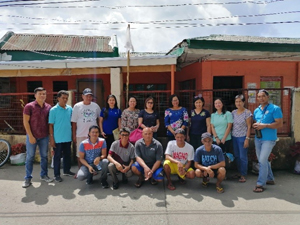 The University of the Philippines Visayas (UPV), supported by the Philippine Council for Agriculture, Aquatic and Natural Resources Research and Development of the Department of Science and Technology (DOST-PCAARRD), turned over three 20-meter (m) and two 50-m longline structures for mussel farming to the Sangguniang Barangay of Cambulaga in Sorsogon City.
The University of the Philippines Visayas (UPV), supported by the Philippine Council for Agriculture, Aquatic and Natural Resources Research and Development of the Department of Science and Technology (DOST-PCAARRD), turned over three 20-meter (m) and two 50-m longline structures for mussel farming to the Sangguniang Barangay of Cambulaga in Sorsogon City.
Aside from providing income to the barangay, the structures are expected to continuously showcase the technology in the area. Moreover, they can make use of these for livelihood projects in culturing high-quality mussels, therefore providing additional food supply to the consumers.
The formal turnover was made through the signing of the Deed of Donation by Dr. Mary Jane A. Amar, Project leader of UPV-DOST Mussel Project, “Pilot testing of longline method for green mussel culture in traditional areas” and Ms. Ma. Teresa D. Perdigon, Brgy. Chairperson of Cambulaga. The Monitoring and Evaluation (M&E) team of the Inland Aquatic Resources Research Division (IARRD) of PCAARRD, Local Government Unit (LGU) representatives, and farmer cooperators were present during the ceremony.
“We appreciate the longline method of mussel culture since it has longer service life than the traditional stake method. Moreover, mussel harvesting is easier, thus, may eliminate compressor diving. It is also cheaper since it can be made from recyclable materials,” said one of the farmer cooperators on behalf of the group.
Other mussel farmers were also inspired to adopt the new technology after hearing the benefits from previous project cooperators. Hence, they requested for trainings on the step-by-step process of the longline culture for their fellow mussel farmers.
Longline method is a cost-effective method for producing high-quality mussel and is proven to be effective in adapting to the effects of extreme weather conditions on mussel culture. This method is suitable for deeper waters and may be used to replace the traditional stake method, which causes heavy sedimentation in coastal areas.
Unlike the stake method, it can be easily pulled to a sheltered place during extreme weather conditions, thus avoiding adverse damage to the mussels and the structure. The depth of the structure can be easily adjusted to lessen the impact of heavy rainfall.
